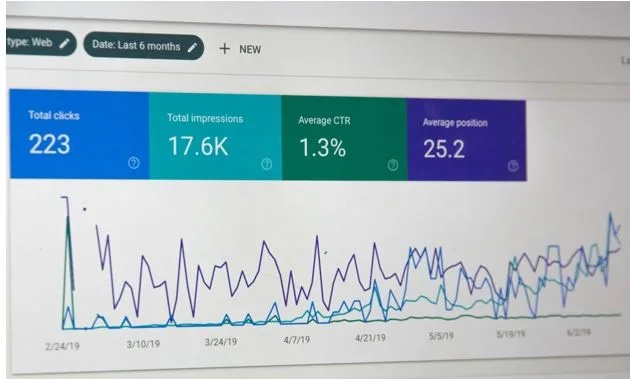Scenario-Based Machine Learning Interview Questions Companies Ask in 2025
As AI adoption accelerates across industries, recruiters are shifting away from purely theoretical ML questions and focusing more on real-world, scenario-driven assessments. In 2025, companies want to hire ML engineers and data scientists who can solve problems under constraints—messy data, limited compute resources, ambiguous objectives, real-time applications, and evolving business needs. This shift has made scenario-based machine learning interview questions one of the most important parts of the hiring process.
These questions evaluate your ability to think critically, design end-to-end ML solutions, and apply algorithms in practical business environments. Below are the most common scenario-based problems companies ask in 2025, along with explanations and how to approach them effectively.
1. Handling Highly Imbalanced Data in Real-Time Fraud Detection
Scenario:
You are building a fraud detection model where only 0.1% of transactions are fraudulent. The model performs well in testing but fails to detect fraud in real-time deployment.
How to approach:
- Discuss techniques like resampling, SMOTE, undersampling, or class weighting.
- Mention the need for precision-recall optimization instead of accuracy.
- Explain the importance of feature drift monitoring, especially in financial transactions.
- Suggest updating the model frequently using online learning or incremental updates.
Companies often use this scenario to test your ability to balance recall (catching fraud) with precision (avoiding false alarms). These machine learning interview questions help employers assess your practical ML deployment thinking.
2. A Model That Works Well Offline but Fails in Production
Scenario:
Your recommendation model performs with 92% accuracy offline but drops significantly after going live.
How to approach:
- Discuss potential causes such as data leakage, training-serving skew, or stale data.
- Highlight the need for real-time feature synchronization.
- Mention monitoring tools and A/B testing strategies.
- Provide practical fixes such as caching strategies, model retraining pipelines, and input validation.
This scenario tests understanding of production-grade ML, not just offline experimentation.
3. Predicting Demand When Historical Data Is Incomplete
Scenario:
A retail company wants you to build a demand forecasting model, but 30% of historical data is missing due to system changes.
How to approach:
- Explain imputation strategies (interpolation, forward fill, KNN imputation).
- Discuss using external data: holiday calendars, weather APIs, promotions, regional factors.
- Suggest probabilistic models or ensemble approaches that handle uncertainty.
- Mention evaluating with metrics like MAPE for time series.
These machine learning interview questions evaluate how well you adapt when perfect data isn’t available—which is the norm in business settings.
4. Reducing Model Latency for a Real-Time Application
Scenario:
Your computer vision model takes 800 ms to make predictions, but the application needs <100 ms.
How to approach:
- Suggest model optimization techniques such as quantization, pruning, and distillation.
- Recommend using smaller architectures (MobileNet, EfficientNet).
- Discuss batching vs real-time inference trade-offs.
- Consider edge deployment vs cloud-based inference.
Companies in 2025 are obsessed with performance constraints due to AI agents, streaming apps, and real-time personalization.
5. Dealing With Concept Drift in Customer Behavior Models
Scenario:
A churn prediction model performs well initially but deteriorates after a few months due to user behavior changes.
How to approach:
- Explain types of drift (covariate drift, prior drift, concept drift).
- Recommend setting up automated model retraining pipelines.
- Suggest monitoring metrics like PSI (Population Stability Index).
- Discuss online learning algorithms and adaptive models.
This scenario reflects modern ML challenges where static models quickly become outdated.
6. Building an Explainable Model for a Regulated Industry
Scenario:
You are designing a model for healthcare or finance, where black-box models cannot be deployed.
How to approach:
- Prioritize interpretable models (logistic regression, decision trees, GAMs).
- Use explainability tools like SHAP and LIME.
- Ensure compliance with regulations such as AI transparency and fairness laws.
- Discuss bias detection and fairness metrics.
Such machine learning interview questions test your ability to balance accuracy with transparency.
7. Improving Model Accuracy When You Cannot Collect More Data
Scenario:
A company wants a more accurate NLP sentiment model, but no additional data can be collected.
How to approach:
- Use data augmentation (synonym replacement, backtranslation, noise injection).
- Leverage pre-trained models and fine-tuning.
- Improve feature engineering and hyperparameter optimization.
- Try transfer learning or embedding-based enhancements.
This scenario tests creativity and understanding of optimization without increasing dataset size.
8. Designing a Scalable ML Pipeline for Massive Data
Scenario:
Your training data has grown from 10 GB to 3 TB due to new logs and user activity data.
How to approach:
- Mention distributed processing tools (Spark, Ray, Dask).
- Suggest chunked training or mini-batch streaming.
- Leverage cloud infrastructure and autoscaling.
- Discuss pipeline orchestration with Airflow or Kubeflow.
Companies want ML engineers who understand scalability—even without coding the entire infrastructure.
9. Deploying a Model With Ethical Constraints
Scenario:
You are building a hiring recommendation system, but regulators require zero bias.
How to approach:
- Identify bias sources in the dataset.
- Use fairness metrics like equal opportunity or demographic parity.
- Apply debiasing techniques such as reweighting, adversarial debiasing, or removing sensitive attributes.
- Ensure transparent reporting and human-in-the-loop review.
2025 sees increased emphasis on AI fairness, turning ethics into a mandatory ML skill.
10. Choosing the Right Algorithm Under Business Constraints
Scenario:
A startup needs a quick ML solution with:
- limited compute,
- fast training,
- explainable results.
How to approach:
- Choose simple models (linear regression, Naïve Bayes, logistic regression).
- Emphasize business ROI over complex architectures.
- Highlight ease of deployment and low maintenance.
- Suggest a roadmap for future upgrades.
Such machine learning interview questions evaluate your ability to align solutions with business priorities—not just technical preferences.
Final Thoughts
Scenario-based ML interview questions reflect real-world challenges: messy data, limited compute, ethical issues, scaling problems, and changing user behavior. Companies in 2025 prioritize candidates who can think like problem-solvers and build end-to-end solutions—not just recite formulas.
Mastering these machine learning interview questions can significantly increase your chances of landing ML roles in leading tech companies, startups, and AI-first organizations.






